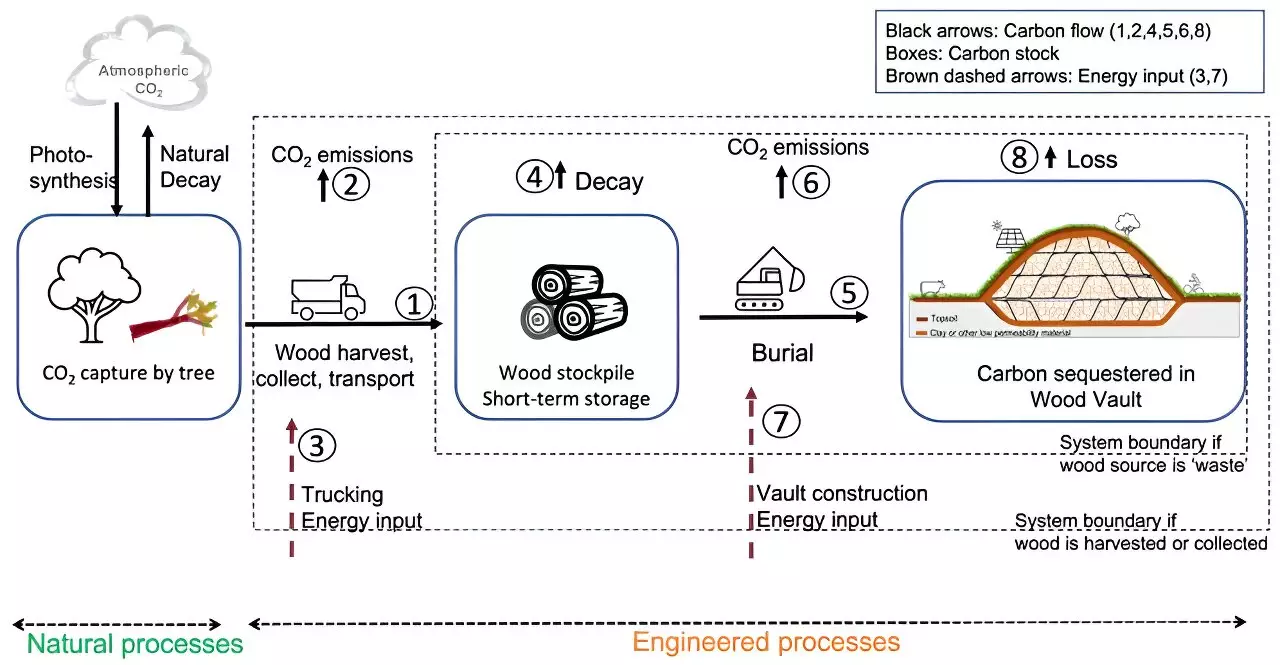Climate change, driven predominantly by the accumulation of greenhouse gases in the atmosphere, poses an existential threat to ecosystems and human societies alike. In response to this pressing crisis, researchers and scientists across the globe are diligently searching for innovative solutions to mitigate carbon emissions. Traditional methods of carbon capture tend to be expensive and, often, not scalable. However, a groundbreaking study conducted by a research team from the University of Maryland, in collaboration with the Ministère de l’Agriculture, des Pêches et de l’Alimentation in Canada, explores a cost-effective and practical approach: the burial of biomass to sequester carbon.
The research, published in the journal Science, investigates a remarkable finding: a log that had been naturally buried under clay for nearly 3,800 years. This log, discovered during excavation in Canada, serves as a compelling case study in the potential effectiveness of biomass burial for carbon storage. What sets this research apart is not only the historical context of the log but also its state of preservation, retaining an astounding 95% of the carbon it had originally sequestered during its lifecycle. This discovery supports the hypothesis that biomass burial can effectively trap carbon and prevent its release into the atmosphere—a significant contribution to ongoing climate mitigation efforts.
Plants typically absorb carbon dioxide during their growth phase and return it to the atmosphere upon death and decay. However, if this organic matter is buried—especially in clay-rich soils—the process of decomposition can be effectively halted. The study highlights this process and quantifies the economic viability of burying biomass, estimating the costs at a mere $30 to $100 per ton, a fraction of the more expensive carbon-capturing methodologies which range between $100 to $300 per ton. The research suggests that implementing this approach could potentially sequester an impressive 10 gigatons of carbon annually.
Given the global abundance of suitable soils, particularly those rich in clay, the proposed method of biomass burial emerges not only as economically feasible but also as environmentally advantageous. This method holds promise for scalability in various geographical contexts. It invites policymakers and agricultural stakeholders to consider utilizing excess agricultural waste or other biomass materials for burial, thereby transforming waste management practices into active climate solutions.
While the findings are compelling, it is essential to approach them with a critical lens. The practical implementation of biomass burial requires thorough analysis, including considerations of ecological impacts, legal frameworks surrounding land use, and the long-term monitoring of buried materials. Nonetheless, the research from the University of Maryland opens a pathway to rethink carbon sequestration tactics, highlighting a potentially transformative approach at a fraction of existing costs. This innovative method not only contributes to climate change mitigation but also challenges conventional waste management paradigms, positioning us toward a more sustainable future.

